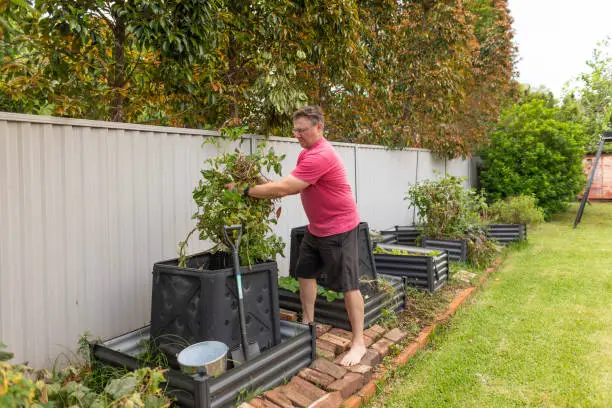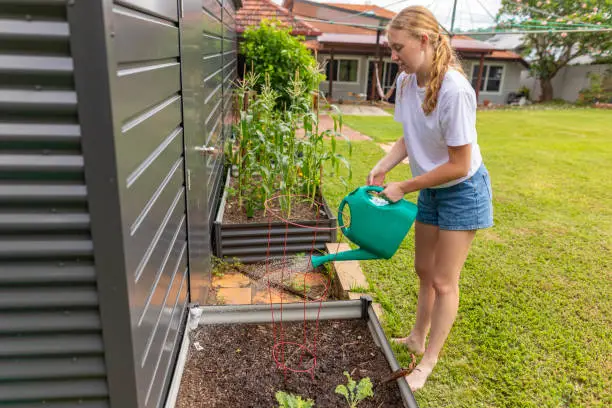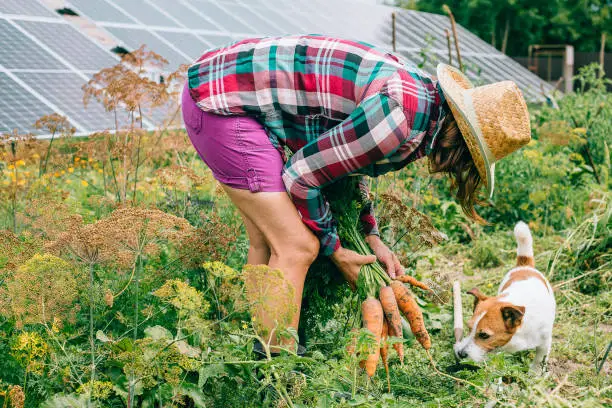Using Local Resources for Economic Efficiency in Small-Scale Homesteading
Everyone who loves backyard homesteading wants to be self-sufficient, sustainable, and more connected to nature. While enjoyable, this lifestyle brings distinct problems and opportunities, especially for economic efficiency. Finding and using local resources imaginatively can help overcome these problems. This examination of local resources is about constructing a sustainable, community-integrated homestead, not just saving money.

Leveraging local resources starts with recognizing your surroundings’ natural bounty. Foraging for abundant local berries, mushrooms, and plants may be required. It’s about following nature’s cycles and homesteading accordingly. For instance, collecting rainwater during the wet season to irrigate your garden during dry months conserves water and lowers utility bills.
Using what’s available goes beyond the natural to the community. Homesteaders benefit from local trading and bartering. Consider trading tomatoes for eggs with a neighbor. This simple yet meaningful exchange lowers waste, strengthens community bonds, and reduces monetary transactions, retaining resources in the community.
Seed swaps and plant exchanges are another way to get community involvement. These events offer gardening and pest management advice as well as seed swapping. By repurposing waste, they prove that “one man’s trash is another man’s treasure.”
Often ignored, the local library has a wealth of free resources. From gardening books to canning and preserving classes, your library card can help you improve your property. Many libraries now provide tool lending libraries, which can significantly minimize the cost of infrequent equipment purchases.
Locally sourcing building materials saves money and helps the environment. Salvage yards and local ads are great places to find cheap building materials. Reclaimed wood gives homestead projects character and a story of sustainability and resourcefulness.
Internet guides and designs for homemade alternatives to store-bought things are abundant for DIYers. Your inventiveness and willingness to learn can save money by producing laundry soap or building a pallet chicken coop.
Renewable energy is also crucial to homesteading’s economic efficiency. The initial investment in solar panels can significantly lower electricity bills and create cash through net metering. Adding a rain garden or small pond to the landscape reduces erosion, improves water quality, and adds aesthetic value.
Permaculture, which promotes self-sufficient agricultural ecosystems, can maximize local resource usage. Creating garden beds and planting designs that imitate natural ecosystems reduces water, fertilizer, and care.
Kitchen leftovers become nutrient-rich compost through worm composting, decreasing waste and enhancing garden soil without artificial fertilizers. This composting approach reduces landfill waste and creates free, high-quality soil.
Observing and interacting with your environment is critical to using local resources. It’s about learning from others’ accomplishments and disappointments and applying them to your situation. Homesteading forums and social media groups can be essential for finding like-minded people ready to share their experiences and ideas.
Building relationships with local farmers and producers allows for bulk purchases or “seconds” edible but unattractive produce. These ties can foster mutual support and collaboration, boosting homestead sustainability.
Foraging crosses the homestead to the landscape. Many locations teach safe foraging, allowing homesteaders to obtain edible and medicinal plants. This understanding improves nutrition and land connection.
Urban homesteaders, generally space-constrained, use their resources creatively. Urbanites are reimagining homesteading in cities with rooftop gardens, vertical planting, and hydroponics.
Sell Your Surplus to Maximize Small-Scale Homestead Production Returns
Homesteaders often have more than they need in the changing backyard homesteading scene. Homesteaders can start small-scale production and sales with this overflow of fresh produce, fruits, and handcrafted goods. Understanding market demands, using local networks, and using innovative selling tactics that promote sustainable living are essential to moving surplus to purchase.
Turning a surplus into income requires finding what sells and specialized markets in your neighborhood. It takes some investigation and observation. Rare heirloom veggies or organic, free-range eggs may sell well in markets where people care more about food quality and source. Customers seeking absolute, locally produced goods may also buy homemade jams, jellies, or bread.
Storytelling about your products boosts their market appeal. Businesses with stories, especially those that practice sustainability, ethics, and community involvement, are popular. Share your product’s journey from seed to table on social media, packaging, or at the point of sale to engage with customers. This tale implicitly invites clients into homesteading, not simply marketing.
Packaging and presentation are sometimes disregarded, yet they may captivate customers and set your products apart in a crowded market. Sustainability should guide these endeavors. Biodegradable, recyclable, or reusable packaging attracts eco-conscious consumers and supports the principles of waste reduction and environmental protection.
Pricing products is tricky. Costs must be covered, and a decent profit margin must be maintained while remaining competitive. Take into account input costs, time, and product uniqueness. Remember to value your job, especially if it gives organic certification or exclusive varieties.
Selecting the proper sales channels can boost your success. Farmers’ markets, CSA shares, local food co-ops, and online marketplaces are great for accessing local food consumers. Farmers’ markets offer direct client interaction, while online sales are more widespread but impersonal. Understanding these details can help you choose product outlets.
Local producers can collaborate and network to create new opportunities. Joint partnerships like shared market stalls or CSA boxes can save costs and enhance product variety, making them more appealing to customers. Building ties with local cafes, restaurants, and shops can lead to regular supply agreements and reliable income.
Selling food requires knowing local legislation and food safety norms. Compliance certifies product safety and fosters customer trust. Successful small-scale food businesses must obtain permits, fulfill labeling laws, and handle food safely.
Learning about the benefits of small-scale production can help customers become loyal advocates. Workshops, farm visits, and local food events can raise awareness, involve the community, and teach about sustainable, local agriculture. This education includes justifying product prices with quality, ethics, and environmental benefits.
Social media and online marketing are essential in today’s digital world. A good internet presence might help you reach customers outside your local area. A behind-the-scenes look at your homesteading operations, regular updates, and compelling content may establish an online community of supporters invested in your success.
Success requires monitoring and adjusting to feedback, sales data, and market changes. One season’s bestseller may not be following. Your firm may be affected by changing customer tastes, new competitors, and food safety requirements. You must adapt to these changes while maintaining your homesteading beliefs.





Leave a Reply